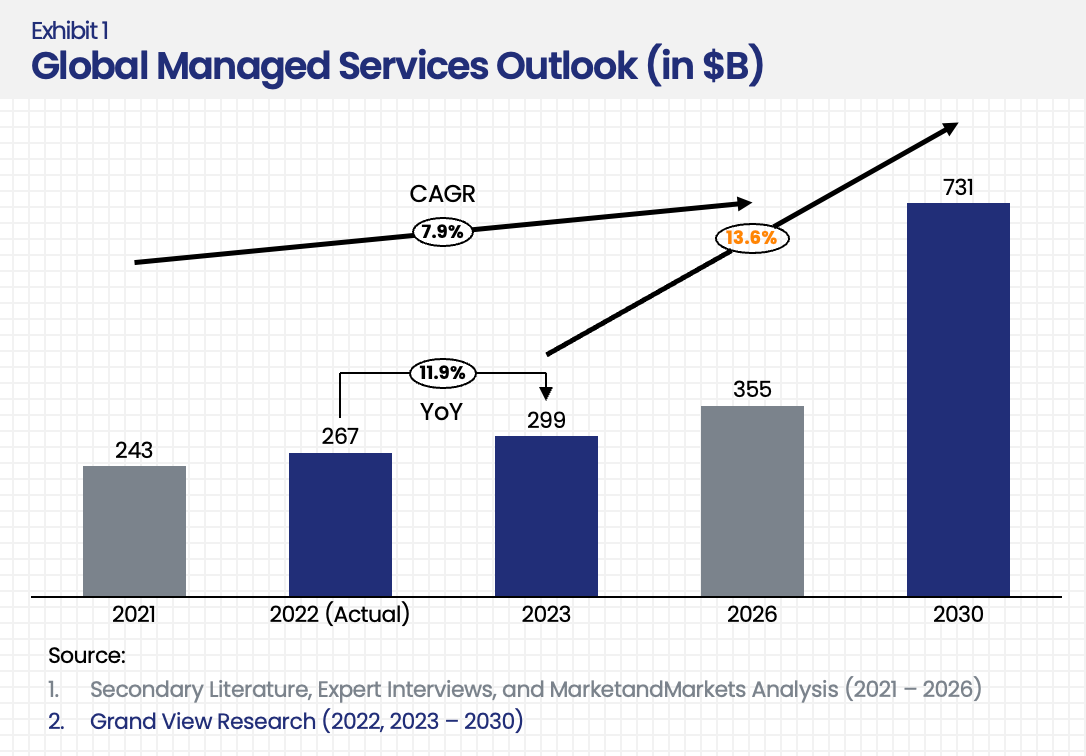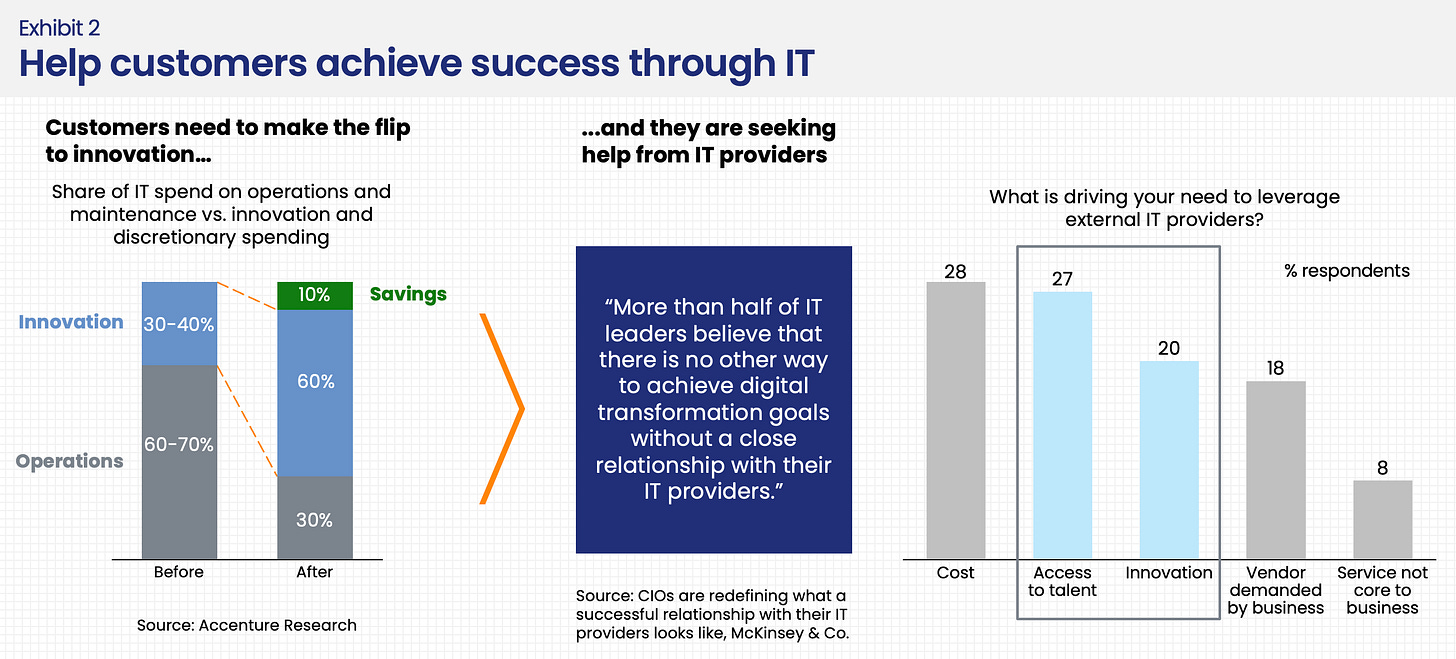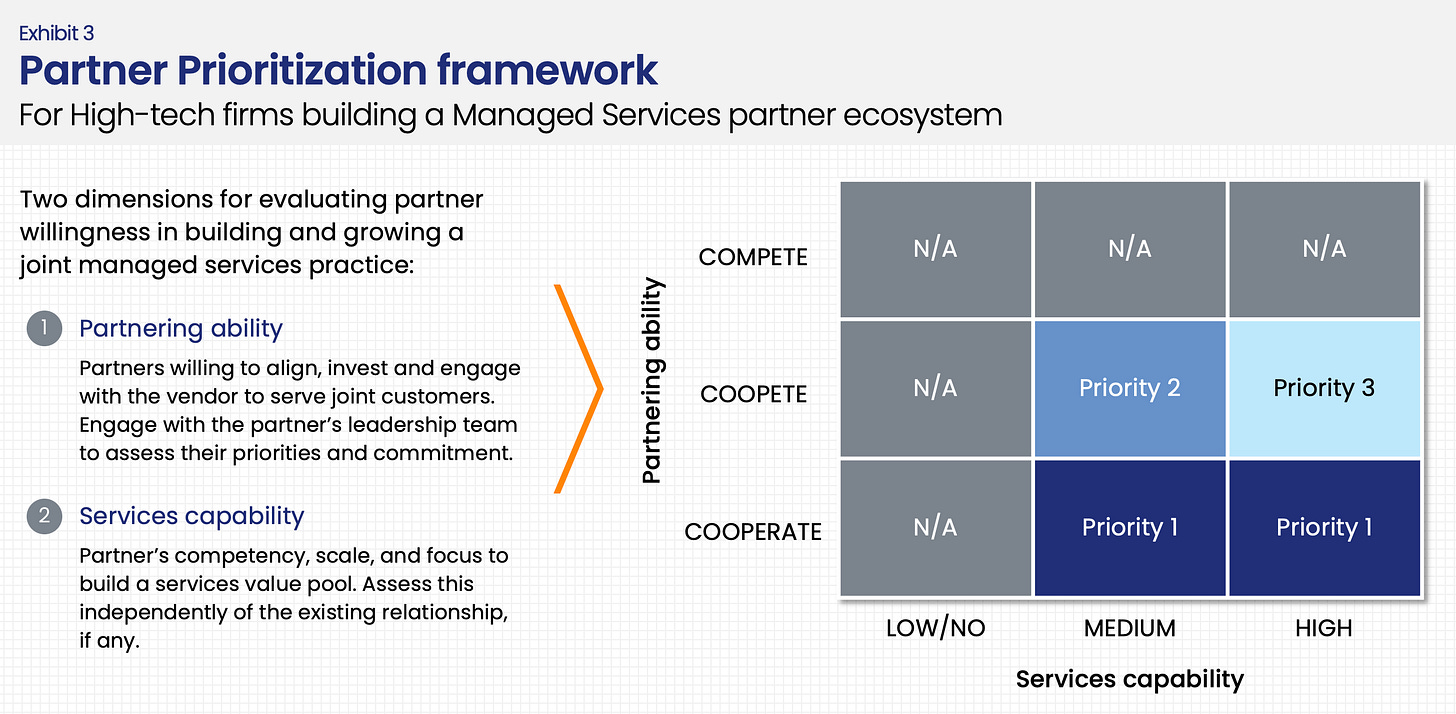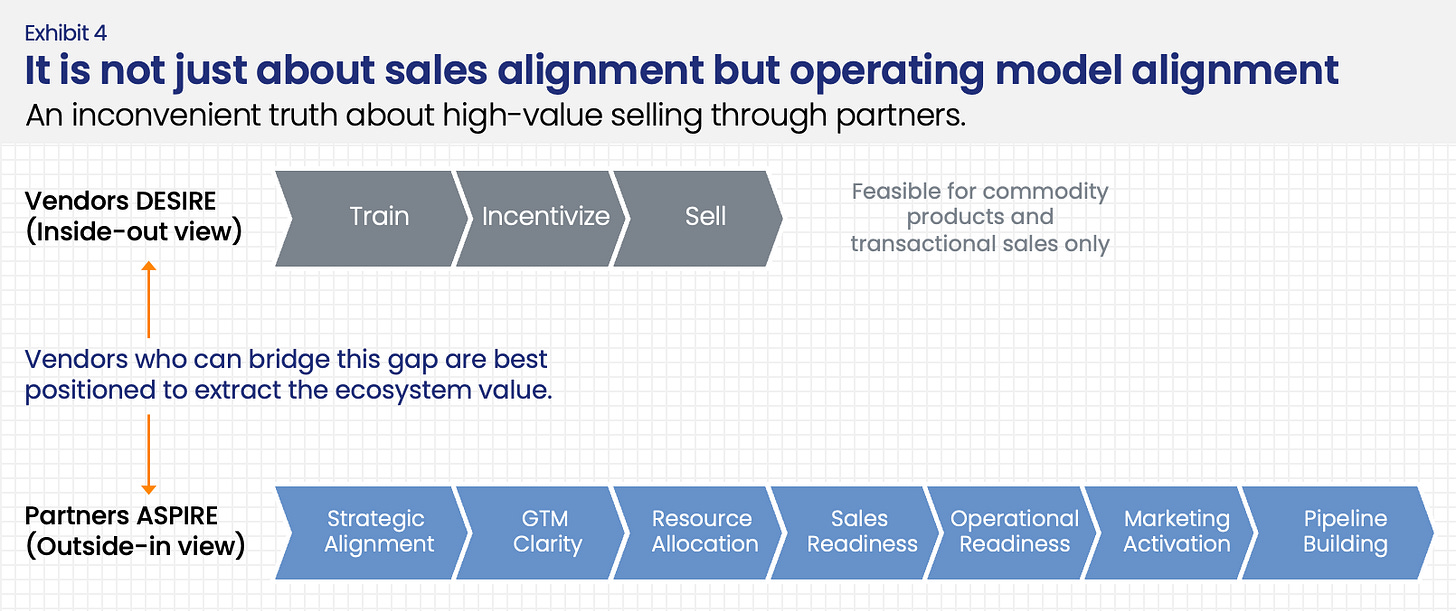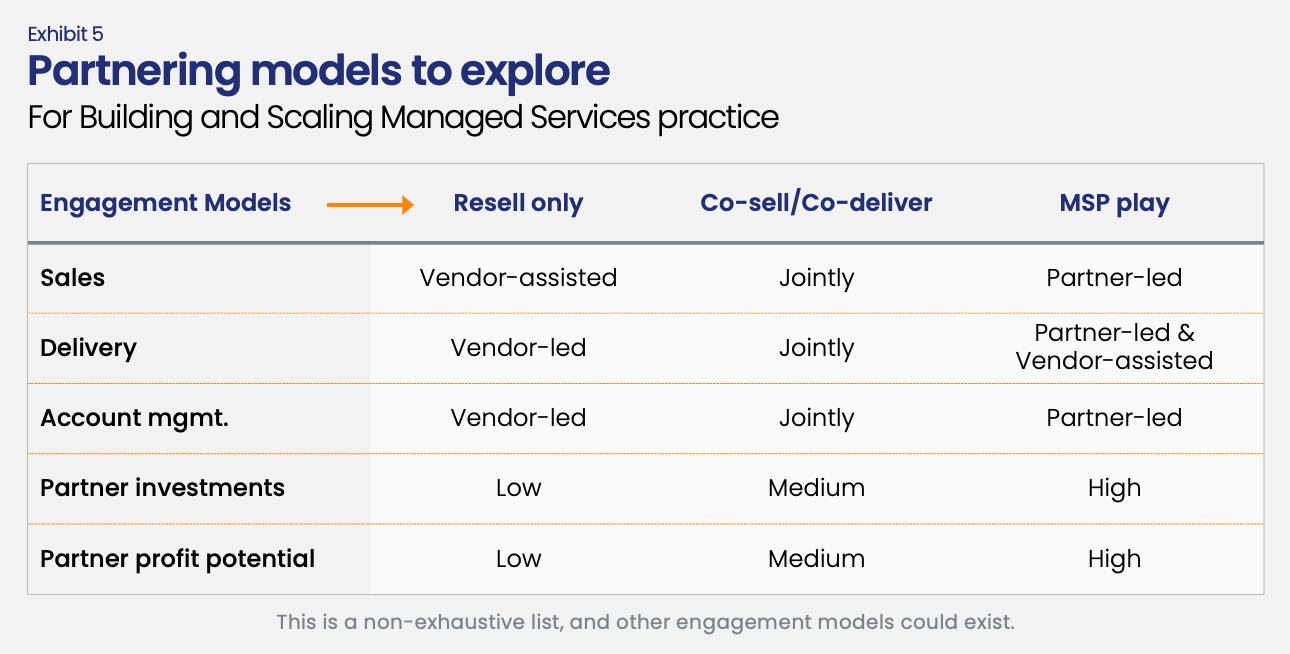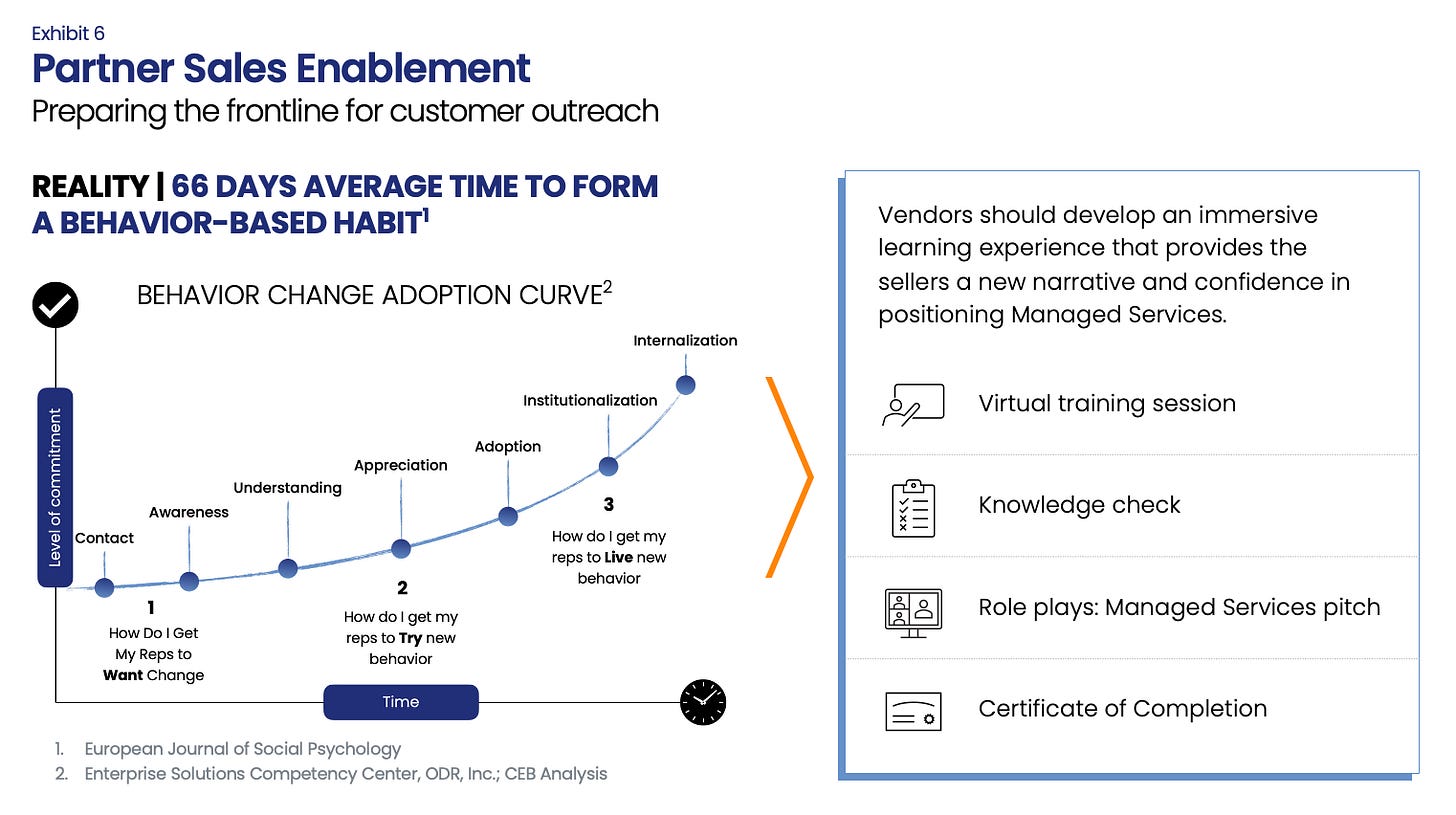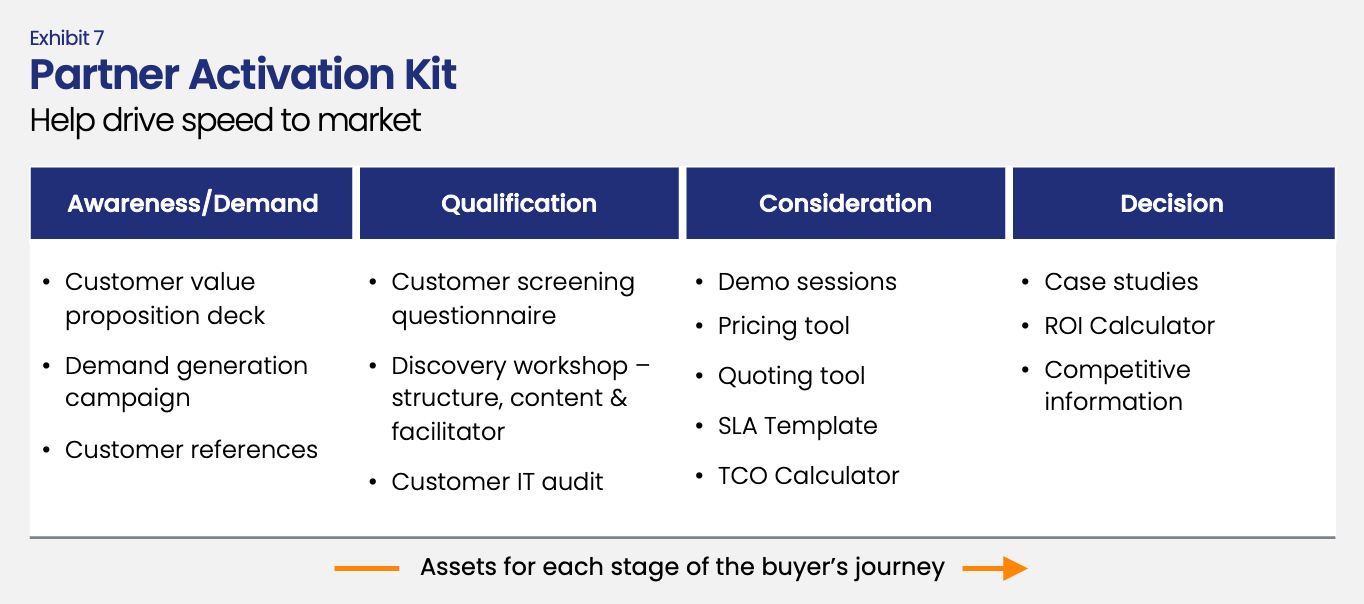Championing Managed Services Growth 🚀 with an Ecosystem Play
Harness the Right Mindset, Skillset, and Toolset to scale the Managed Services offering through capable and committed partners.
This report addresses two essential questions in growing IT Managed Services through a symbiotic partner ecosystem:
1. Why should channel partners consider building a Managed Services practice?
2. How can Hi-Tech vendors leverage the indirect ecosystem to scale their Managed Services offering?Market volatility, geopolitical situations, and increased economic uncertainties are compelling organizations, both large and small, to explore adjacencies that help them survive and thrive. The IT Channel ecosystem has been equally impacted by these headwinds, forcing partners to search for new value pools.
As per McKinsey research[1], companies that have made business building a top strategic priority have grown more quickly than other organizations during periods of high economic volatility. (Approximately 10% above market growth rate)
Adopting the business-building mental model is vital for channel partners to future-proof their business. It's time for partners to demonstrate strategic courage in navigating the VUCA (Volatile, Uncertain, Complex, and Ambiguous) world. Hi-Tech vendors and partners should take note of this and work together to build adjacencies that propel them forward.
A high-potential segment to consider would be Managed Services. Simply put, it is the practice of removing the undifferentiated IT heavy lifting from the customer, allowing them to focus on their core business. This idea has evolved since the 1990s and is becoming increasingly relevant to customers, as the landscape shifts from a people-centric to a platform-centric approach. Global research indicates (Exhibit 1) that this market presents tremendous growth opportunities (13.6% CAGR, 2023-2030) in the near and long term.
“Business building is vital to a company’s longevity. To do it successfully, an organization needs the strengths of an incumbent and the agility of a start-up.”
McKinsey & Co.[2]
Forces Shaping Managed Services
The need for customers to lower their IT Operational costs and invest in Innovation (Exhibit 2) is fueling this growth in the managed services segment. This, coupled with factors such as hybrid work growth, multi-cloud adoption, increased cybersecurity risk, and the need to meet regulatory & compliance requirements, has further accelerated the need to optimize IT management.
McKinsey research[1] suggests that IT leaders are most likely to seek help from external IT providers to access talent and Innovation. This operating model allows them to focus their limited resources on core competencies and partner with managed services providers (MSPs) to deliver IT-enabled business outcomes.
Delivering on the promise of IT agility with stability and resiliency is no longer a solo sport. Successful companies build a symbiotic ecosystem of partners to co-create solutions that deliver superior customer experiences. Hi-tech vendors must embrace this reality and bring along their capable partners in creating customers for life.
For partners, this unlocks incremental opportunities for value capture through greater customer stickiness, better visibility into customer utilization and potential needs, and reduces competitive pressure, resulting in increased customer lifetime value. And lastly, the predictable, recurring, and multiplier effect on partner earnings can help them weather economic storms.
Managed services continue to be one of the three largest growth engine in tech
- TSIA[3]
Based on our implementation experience, we highly recommend that vendors adopt a guided and assisted approach built on the trifecta of the Right Mindset, Skillset, and Toolset. Getting this correct ensures vendors stay aligned or risk being forever behind; hence, they need to be the steward of this approach.
The Right Mindset
Mental model required to select and onboard partners
The critical first step is to identify the right set of partners committed for the long term. While much of this is an art based on existing relationships, we recommend a data-driven approach to assess their partnering behavior and existing capabilities (Exhibit 3).
Shortlisted partners should be onboarded programmatically into a sandbox environment. This ensures they have the proper understanding, risk appetite, and support through the learning curve.
Vendors should deliberate while defining the partner readiness journey. Given the complex nature of the Managed Services business, it can’t be treated as a transactional sale. Vendors must start with strategic alignment and lay out the rest of the joint Go-to-market plan.
Remember to keep the plan simple and focus more on the implementation. The schema below (Exhibit 4) outlines this approach in greater detail and calls for a well-curated incubation and activation program. The onboarding journey ensures that partners progressively build the right capabilities, leaving little margin for wasted investments.
A key consideration at the outset is to decide on the engagement model. This is a function of partners’ capabilities and ambitions. In our experience, we have mainly encountered two partner archetypes (Exhibit 5):
Low or No Managed Services (MS) experience – they mainly fit the resell-only model
Medium to High MS experience – they are mainly interested in co-delivery and/or leading with their own MS backed by the vendor.
The engagement model will also determine the nature of the investment and its impact on partner financials. Vendors are responsible for making the partnership economically attractive and should build scenarios to explain the revenue and profit sharing between the parties involved.
The Right Skillset
Driving partner sales and technical readiness
Once the strategic alignment and joint Go-to-market planning are complete, the next essential step is to harness the right talent and capabilities for this new endeavor. Look for people with the agility and ability to embrace ambiguity and an accelerated pace of change. Start with the partner sellers and nurture them to be field-ready. Sales enablement is not a one-and-done effort and involves a journey toward building sales champions.
Given the technical nature of Managed Services, vendors should encourage partners to bring together their sales and pre-sales teams for such learning programs. Training, learning checks, role plays, and certification is required to build the seller’s confidence (Exhibit 6).
Additionally, partners require training on the systems, tools, and processes for service orchestration and delivery. They may also have to attain the requisite technical certifications to take their solutions to the market.
The Right Toolset
Empowering customer outreach and activation
Will and skill are not enough to guarantee success; vendors must arm partners with the tools to achieve commercial outcomes (Exhibit 7). Create a playbook that partners can refer to as a blueprint for building and scaling their managed services business. Marketing remains a crucial challenge for partners, requiring vendor-assisted/funded marketing firepower across the customer journey.
Partners also need access to pricing and quoting tools and adequate pre-sales support to configure the right solutions for customers. They will also need case studies, customer references, and TCO calculators to present a credible value proposition to their customers.
Orchestrating this ecosystem presents its own challenges without full hierarchical power or control. BCG Research[4] states that the most prevalent reason for failure is the lack of a robust governance model in managing the ecosystem. Hence, the final step is to implement a framework for ecosystem governance that provides vendors and partners with a transparent view of progress, key milestones, and room for continuous improvement.
Business leaders must define their North Star metrics to measure success, like Net Promoter Score (NPS), Customer Lifetime Value (CLV), Customer Acquisition Cost (CAC), and Customer Churn. There are many other indicators, but vendors and partners must agree on a few to help understand the economics and outcomes of their operating model.
Envisioning and implementing new growth levers will be crucial to business longevity. An ecosystem play can turbocharge the go-to-market efforts, but such partnerships can't be built and operated in autopilot mode.
Vendors must be co-pilots in this journey, helping navigate the operational complexities, de-risking the investments, and enabling partners to achieve their full potential in the long run.
[1] New-business building in 2022: Driving growth in volatile time, McKinsey & Co.
[2] Building a business within a business: How to power continual organic growth, McKinsey & Co.
[3] The State of Technology Services, 2023, TSIA
[4] How do you manage a business ecosystem? - BCG



